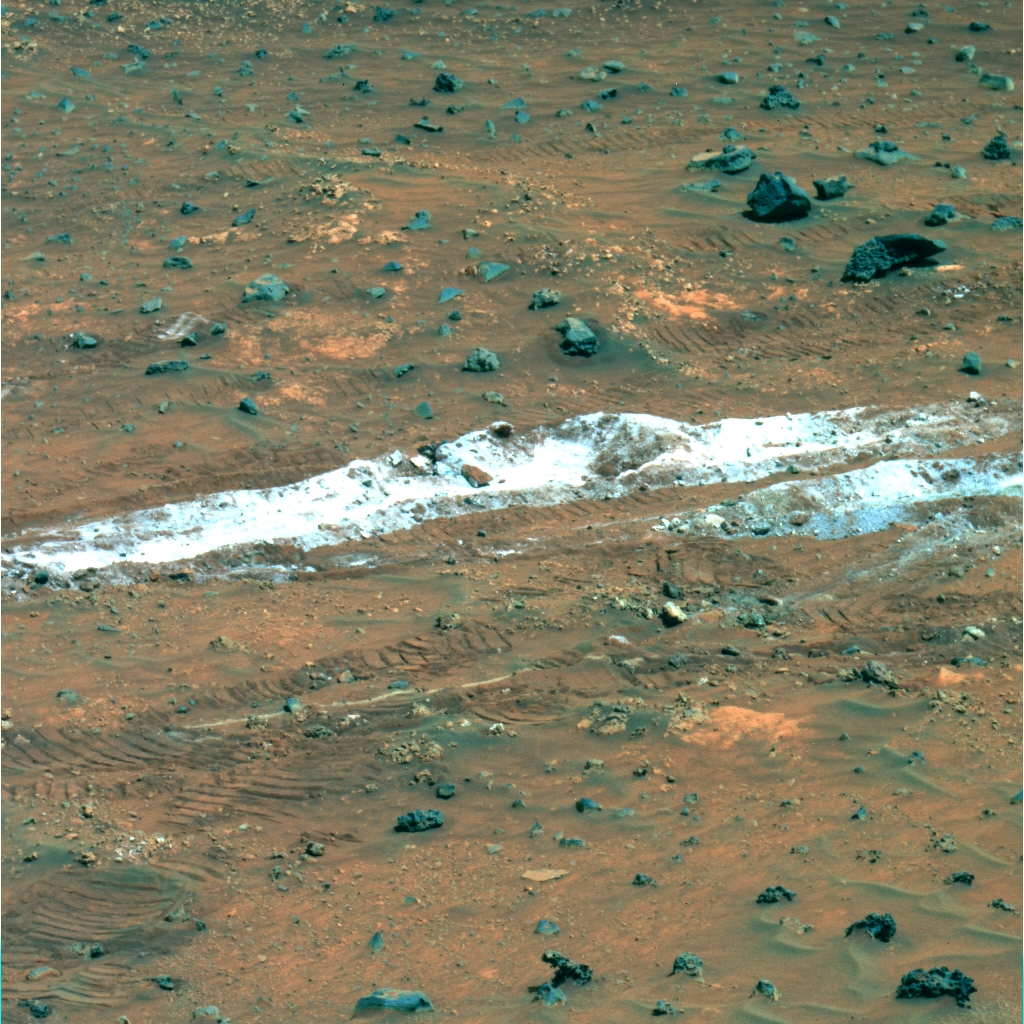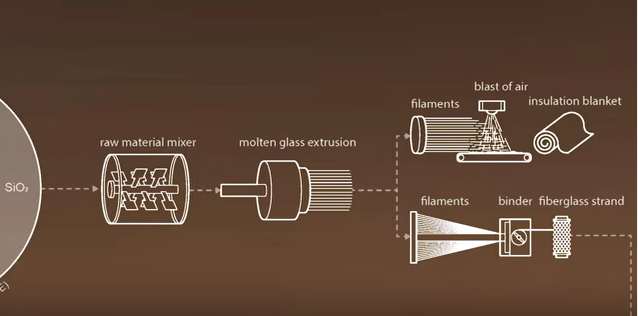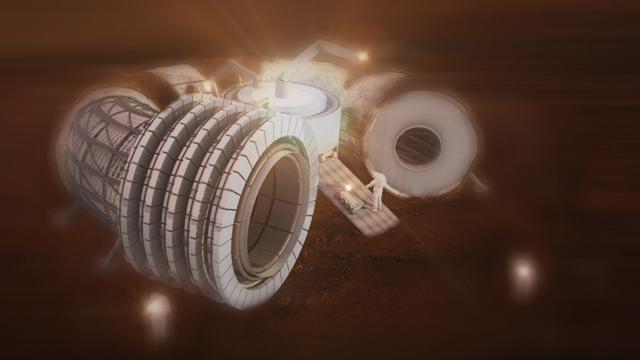NASA has spent the past few years asking architects, engineers, and designers outside of the space industry to think about habitat-building on the Red Planet — in part through competitions like the 3D-Printed Habitat Challenge.
The competition, which wrapped up this fall, asked designers to imagine how found materials on the surface of Mars could be used to create structures with large-scale 3D printing. Ultimately, a design that used the freezing temperatures of the planet’s atmosphere won out. But there were dozens of finalists worth looking at, and this week MIT’s architecture school published a closer look at their own finalist entry.
Their proposal, called Ouroboros, isn’t remarkable for the design of the habitat itself: Their inflatable toroid-shaped dwelling is similar to ideas NASA has been kicking around for years. What’s really interesting about their proposal is how they proposed building it — and from what materials. The team of architects, along with engineering students, came up with the idea of weaving a super-strong fabric that could be inflated using what they could find on Mars’ surface and atmosphere.
They focused in on a region of Mars called Silica Valley — where the Spirit Rover detected that the soil was as much as 60 per cent silica. Back in 2007, when NASA announced the discovery of the area, it speculated that the “patch of bright-toned soil” was “so rich in silica that scientists propose water must have been involved in concentrating it,” a hypothesis that has sounds a lot more plausible in light of NASA’s recent announcement about water on Mars.

Silica-rich soil shot by Spirit. NASA /JPL-Caltech / Cornell
Silica, of course, is one of the raw materials needed to make glass, which could be extruded in its molten form, creating threads of fibreglass to be “woven” using a project-specific loom. That fibreglass would make a strong, light exoskeleton for the dwelling, though the team also knew they would need some form of air-tight plastic to ensure a pressurization.
“We noticed that the atmospheric and soil composition contained the necessary compounds to make thermoplastics,” says Caitlin Meuller, an assistant professor of building technology, in a video about the project. A group of engineering students came up with the idea of creating plastics using those compounds by “synthesizing the polypropylene needed to make the thermoplastic composite form hydrogen and carbon dioxide in the Martian atmosphere.” That thermoplastic would be woven with the fibreglass and together, heated until they created a bonded structure.

The project ended up not being chosen as a winner, but it’s a great example of the kind of thinking about Mars that NASA is hoping to see more of — in fact, when this competition wrapped up this month, the agency launched a second challenge focused specifically on using Martian soil and rocks for construction.
In an odd way, this approach to colonizing Mars borrows a lot from current ideas on Earth about building with local materials. While we think of Mars as a homogenous red iron-scape, it actually has a diverse composition that can be used to settlers’ advantage — just like Earth.
Check out the full making-of video, or see more about the project here.
